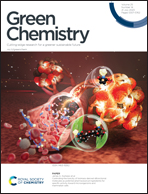Cellulose processing in ionic liquids from a materials science perspective: turning a versatile biopolymer into the cornerstone of our sustainable future
Abstract
Shaping cellulose into functional materials entered a new era with the introduction of ionic liquids as novel, green solvents about 20 years ago. As non-volatile solvents with high thermal and chemical stability, ionic liquids can provide an environmentally more benign tunable platform for cellulose processing, compared to existing technologies. The past decades have seen fruitful efforts devoted to the development of materials based on ionic liquid/cellulose processing systems. In this review we discuss the experiences gained, and highlight the emerging applications. In particular, coatings and thin film applications for structural materials (e.g., for packaging), thin film filtration membranes, immobilisation of enzymes, and catalytically active nanoparticles, separator membranes and conductive composites for energy storage and other electronics applications, cellulose/biopolymer green biocomposites, cellulose-based ionogels, hydrogels and aerogels, and cellulose-based or composite fibres will be discussed in detail. We will also take a critical look at the perspectives of this field. The use of a certain grade of technical cellulose, and the purity of the prepared materials should be more carefully justified in the future, as they have an influence not only on the properties of the fabricated material, but also on the economics of the process. Furthermore, to make ionic liquids truly green solvents, and competitive alternatives to existing technologies, more studies are needed on recyclability after material fabrication, and on ways to minimise the energy consumption of such processes, among other issues.

- This article is part of the themed collection: 2023 Green Chemistry Reviews


 Please wait while we load your content...
Please wait while we load your content...